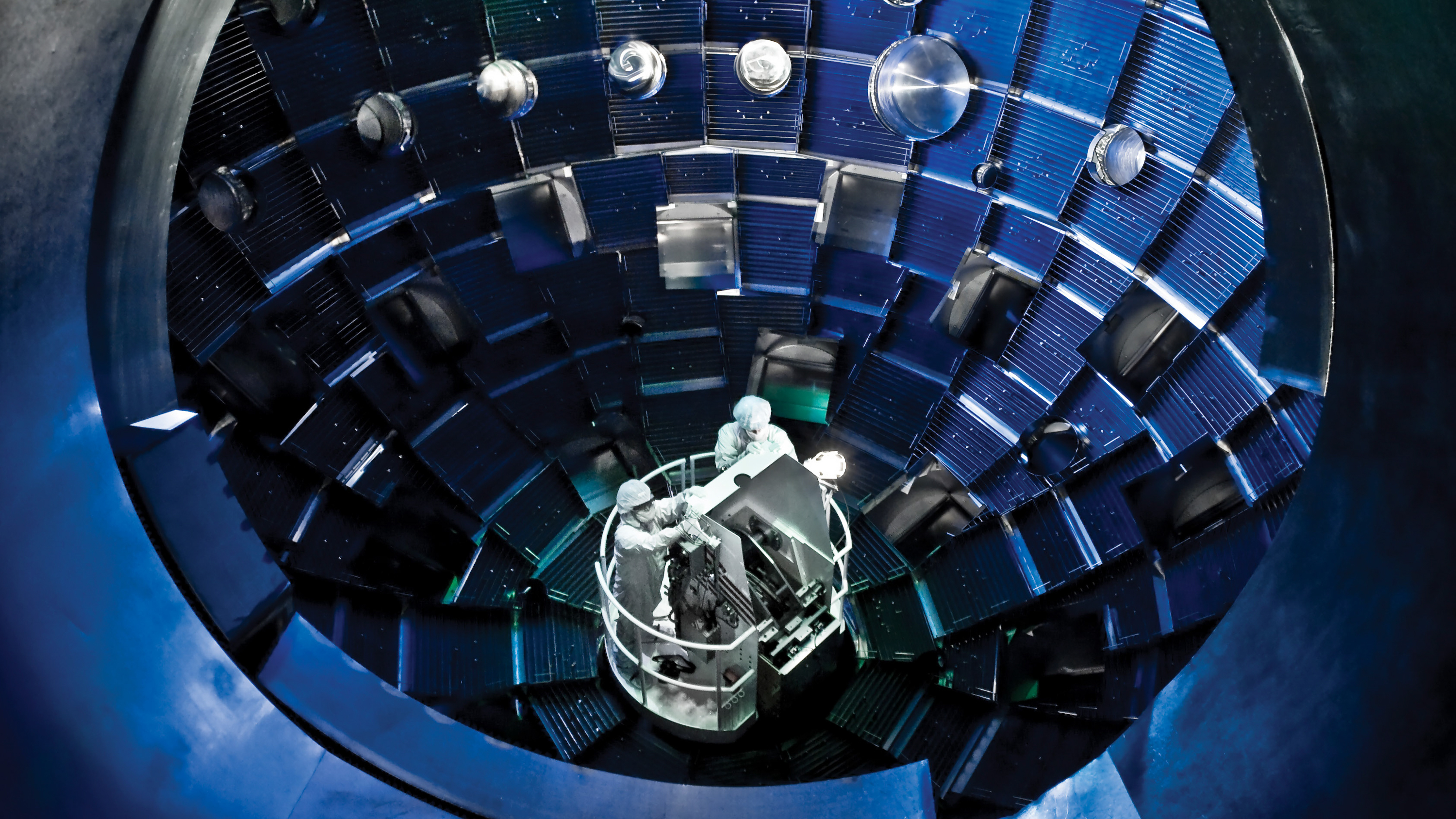Casey Crownhart

There’s been a fusion breakthrough. No, for real this time.
There are plenty of quips about fusion power, and there’s a reason that the technology has a bit of a “boy who cried wolf” reputation: researchers have been talking about using it to build limitless clean energy for decades, making big promises about commercial power plants being only a few years away. And so far, things haven’t quite turned out that way.
So when a news cycle about fusion starts calling something a “breakthrough,” many are understandably suspicious. We’ve entered into one of those news cycles, as a national lab reached a major research milestone, finally running a reaction that gave off more energy than contained in the lasers used to start it. So let’s talk about the announcement that sparked the most recent fusion hype, what it means, and what you should take away from it.
What is fusion power, and what's the hype about?
In a nutshell, fusion reactions generate energy by slamming atoms into each other until they fuse, releasing energy. (The sun’s core is powered by nuclear fusion, so in a way, I guess you could say solar power is a form of indirect fusion power?)
Fusion power could provide a new, zero-carbon power source for the grid, and based on how powerful fusion reactions are, the technology could use very small amounts of fuel that’s widely available, without generating dangerous waste materials. The appeal is clear.
The first step towards this new power source is to make fusion reactions happen in a controlled way in the lab. And crucially, researchers need to get these reactions to give off more energy than what's put in to start the reaction. That’s the target that companies and public research facilities alike are going after, and until last week, nobody had achieved it.
Since it began experiments in 2010, the National Ignition Facility at Lawrence Livermore National Lab in California has been among the frontrunners in the race to net energy gain. In recent years, NIF has gotten tantalizingly close to achieving its goal: just last year, researchers achieved a 70% energy return.
So when rumors started circulating over the weekend, first reported by the Financial Times, that researchers at NIF had finally achieved net gain, the energy world pretty much had one of two reactions: This is huge news
Here we go, another fusion hype cycle
When I saw this news, sitting outside a dressing room while doing some holiday shopping, I had both reactions. Quickly scrolling through the article on my phone, I pored over the details. 100 million degrees, 192 lasers, a few megajoules of energy released. I messaged the article to my colleagues with a simple comment: “Huge if true.”
And true it was: a couple days later, the Department of Energy confirmed the news in a press conference.
This is a big moment for fusion power, a basic test that the field has been striving for since researchers started dreaming about it in the 1950s. That deserves to be celebrated, and I think it’s fine to get excited about it. It’s a true milestone.
But…we need to be clear here. This is primarily a scientific achievement. Fusion has a long way to go to be a technology that we’re really using in our daily lives.
What does this mean for fusion's prospects?
As I pointed out in my news story, Lawrence Livermore has the world’s most powerful laser. So this isn’t exactly something we’re going to be able to replicate immediately all over the world. It’s not designed to be, either.
In fact, the approach to fusion that NIF uses isn’t even the one that most researchers think is the most likely to be commercialized (partially because of that whole world’s largest laser thing).
NIF is researching something called inertial confinement fusion, where a burst of powerful lasers is used to generate x-rays. These x-rays can then compress and heat a fuel made of deuterium and tritium (isotopes of hydrogen) to a high enough temperature and pressure so they can form a plasma and their nuclei can begin to fuse, producing energy.
The consensus among fusion scientists tends to be that a different approach to fusion called magnetic confinement, specifically a reactor called a tokamak, is the most promising near-term approach for commercial efforts. These donut-shaped reactors use powerful magnets to hold the fuel in place and create the intense conditions needed for fusion using an electric current and radio waves.
Fusion promises to generate cheap, carbon-free, always-on energy, with no meltdowns and little radioactive waste.
This is the approach that’s being used by Commonwealth Fusion Systems, a startup spun out of MIT that’s the most well-funded private player in the fusion space. My colleague James Temple took an in-depth look at the group earlier this year, and we named practical fusion reactors one of our 10 Breakthrough Technologies of 2022.
Commonwealth is working on a compact, relatively inexpensive reactor that would cost hundreds of millions of dollars, instead of the billions it took to construct NIF. Its approach relies on superconducting materials to achieve super strong magnetic fields that can keep plasma in place for fusion reactions (the temperatures are far too high to use conventional materials to keep the fuel in place).
Some experts in fusion say practical reactors that can be used to generate significant amounts of power are still a few decades away. But Commonwealth and other startups have more ambitious timelines in mind, planning to build demonstrations within a few years and power plants within about a decade. Commonwealth announced last year that it raised $1.8 billion in venture capital funding to make it happen.
No comments:
Post a Comment